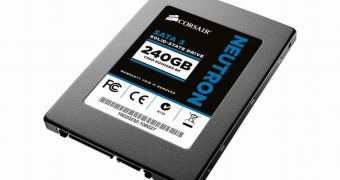Besides the controller processor, what determines the performance of a solid-state storage device are the semiconductors used in its making, and there will be a general improvement in quality in 2013.
Just like on the CPU industry, the NAND Flash storage segment advances at a sustained rate, as all manufacturers of chips move to better processes every several months.
Currently, the most advanced are constructed on the 20nm technology, although there are some 19nm models too.
In 2013, companies should be able to transition to 16nm, despite the slowing sales levels of SSDs, flash drives, memory cards, etc.
While lower production capacities have been implemented, choosing against a process advancement would be counterproductive, since there isn't much that NAND makers can resort to when trying to score better orders.
There will be less need for deliberate shipment control though. When 16nm finally start being manufactured, the supply level will solve itself.
The reason for this is simple: manufacturers are anticipating a supply constraint for 16nm chips, as yields will be low.
Chips are made in wafers, but most of them aren't perfect, especially in the early days of the technology, and 16nm will suffer from this even more than 19/20nm.
It is unclear how long the shortage will last. Fortunately, SSDs are fast as they are, which means that the sluggish move to 16nm won't impact demand for them. There could be some grumbling because slower advancement means slower enablement of higher capacities, but no negative impact will be felt.
On that note, if the SSD market does stumble, it will be owed to the price premium associated with more advanced technologies. Hopefully, the problem won't be as pronounced as before. With how small production is (Toshiba lowered it by 30% compared to a year ago, for example), a price increase for consumer products wouldn't do any good.

 14 DAY TRIAL //
14 DAY TRIAL //